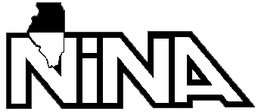In the event you’ve been hiding in a bunker for six months: Twitter is a free, microblogging service. You type up to 140 characters about what you’re doing at any particular moment, hit “update” and instantly alert your “followers” (that term always makes me feel like a cult leader). They can read these messages on their computers or as cell-phone text messages.
Twitter may be responsible for the biggest wave of inane conversation since the 1970s CB radio fad. Thanks to celebrity Twitter – the most vacuous example – I can get up-to-the minute bulletins whenever Demi Moore reads a whole chapter from a book, or when John Mayer moves his bowels. Not to mention the people I actually know, Twittering away their time, chronicling every mundane task and thought. Fascinating.
A few weeks ago, I launched my own Twitter feed as a way to make fun of Twitterers. A sampling of my early Tweets:
Ran out of Scotch tape this morning at my desk. Installed new roll in dispenser.
8:56 AM Mar 25th
Blew my nose just now. May do so again as necessary.
9:03 AM Mar 25th
I think I’m going to sneeze. ... Nope.
9:42 AM Mar 26th
Shockingly, this running monologue of deep thoughts attracted six followers – all people I know, but some of whom I hadn’t heard from in years. People would ask me, “When are you going to give in and Twitter for real?”
“Never,” I’d reply.
Most of Twitter is still narcissistic drivel. But, upon further review … Twitter also has legitimate, productive potential for those of us in the news business. At NINA’s April 24 Spring Conference, Ray Long of the Chicago Tribune showed a variety of ways the service can be used to promote the news product.
Here’s where the whole “citizen journalist” idea might actually work. The professional journalist still gathers and delivers the story, but Twitter followers can help. Say, for instance, an apartment fire breaks out in your town. Using Twitter and the followers you’ve recruited, you can:
- Learn that the fire is going on, in case you’re not near a scanner.
- Tell readers that your paper has a reporter and photographer on the way. This posts to your Web site, alerts your followers to the story and even can send a text message to their cell phones if they so choose.
- Provide live coverage of the event, in short bursts via text message. 1 side of building engulfed in flames. … At least 4 fire depts here. … 8 units in apt building. … Evacuees standing outside.
- Find sources. Anybody know who owns this building? … Anybody heard from anyone who was around when fire started?
- Make the story interactive, while it’s happening. Your followers may text comments, replies, corrections and tips. Obviously information gathered this way needs to be verified, but it can provide a good start.
Basically, Twitter can serve as an amplifier for a reporter’s skills. You’d ask questions like this on the scene, anyway. This just allows you to ask additional people, quickly.
During and after the event, you can promote your Web site, and even provide a link to the story for users with mobile Internet.
Two good things are happening with this whole process: One, you’re engaging with your readers and giving them a greater sense of ownership in the news product. Two, you’re driving users to your Web site.
All of which is a far cry from being instantly updated when some long-lost friend clips her toenails. Which reminds me: I’m @JimKillam on Twitter, and I promise to start using it for something useful. I owe at least that much to my faithful-if-misguided followers.
And here's another Twitter article from Jill Geisler at Poynter.


1 comment:
Great thoughts on Twitter; I like to keep a healthy mix of narcissistic drivel and online news aggregate resources on my Twitter account.
Looking forward to more "Tweets" from you in the future.
Post a Comment